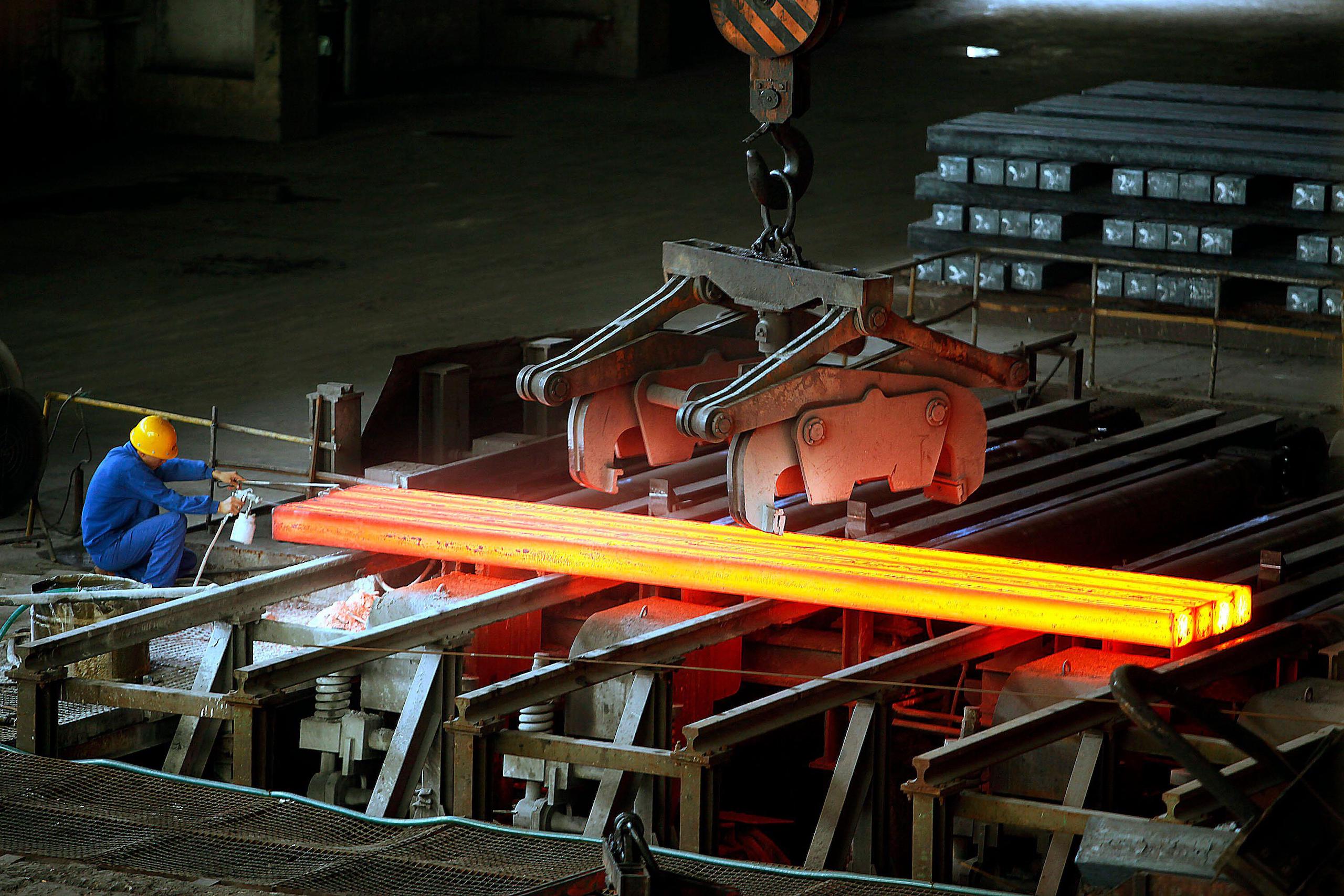In less than a year, China will need to submit its 2035 climate targets to the UN, alongside updates to its pre-existing 2030 targets.
So far, the country has committed to peaking its greenhouse gas emissions before 2030 and achieving carbon neutrality before 2060.
These new and updated UN targets – China’s Nationally Determined Contributions to the Paris Agreement – will be crucial in defining the speed of its emission reductions after the peak, driving its energy transition, and demonstrating the credibility of its neutrality target. Coming from the world’s largest emitter, they are also essential for the global effort to mitigate climate change.
Nationally Determined Contributions (NDCs)
The Paris Agreement requires every signatory party to commit to emissions reductions and climate adaptation targets. Submitted every five years, a party’s NDCs are expected to become more ambitious over time.
China’s current commitments allow for a very slow start to emissions reductions, but the country has since experienced a much more rapid clean-energy boom than those commitments anticipated. There are also early signs of emissions starting to plateau or fall. This is a reason to reassess the national emissions trajectory and should give Beijing’s leaders confidence to set strong 2035 targets.
Our assessment of emission trajectories aligned with the Paris Agreement suggests China should commit to a reduction in greenhouse gas emissions of at least 30% by 2035. A review of opportunities demonstrates how this can be done by building on existing trends and policies.
Starting point: China’s emission trends and commitments
China accounts for 30% of annual global greenhouse gas emissions and 90% of the growth in CO2 emissions since the Paris Agreement was adopted in 2015. Emissions growth accelerated in the country during 2021-2023. Therefore, peaking and shrinking China’s emissions plays an indispensable role in aligning global emissions with Paris targets.
China’s pre-2060 carbon-neutrality commitment can be seen as aligned with Paris goals, but only if the country implements deep emissions cuts in the next decade. This is also key for the credibility of the long-term goal.
However, the current structure of China’s goals leaves room for a slower pace of emissions reduction. Such a pace would see emissions stay at a high level for the next decade or more before being reduced rapidly, as long as emissions reach their peak before 2030.
Because of this, China’s current commitments are rated as “highly insufficient” by Climate Action Tracker, a national climate plan evaluator.
China also needs to specify on paper that its 2060 target covers neutrality across all greenhouse gases. This stipulation has already been stated (by the country’s former climate envoy, Xie Zhenhua) but it is not yet included in the country’s submitted Paris targets.
Strong 2035 targets will be necessary if China’s new NDCs are to align with the Paris Agreement.
By how much does China need to reduce its emissions to align with Paris?
Numerous Chinese and international research groups have proposed pathways to meet China’s 2030 and 2060 commitments. The specific emissions-reduction pathways depend on which global temperature target is being pursued (eg 1.5C or 2C, and with what probability of attaining it), assumptions about CO2 removal, burden-sharing between countries, as well as data and assumptions about the costs of reducing emissions built into the model.
Pathways that recommend modest emissions reductions in the next decade are based on assuming a significant “overshoot” of greenhouse gas concentrations, and subsequent reductions that rely on extremely large-scale carbon removal from the atmosphere. Such pathways have been excluded from our analysis because they are risky, expensive and quite likely implausible.
A survey of published studies, described in the table below, indicates that to align with 1.5C, China’s greenhouse gas emissions should be reduced from their peak by at least 30% by 2035. The most ambitious scenarios call for this reduction to be as deep as 80%. The scenarios included in the UN’s latest Intergovernmental Panel on Climate Change (IPCC) Assessment Report require even larger reductions, with a median of more than 60%.
A daunting but doable task
As China’s emissions have kept rising (at least until 2023), the idea of realising significant absolute reductions in emissions over the next decade might seem daunting to the country’s policymakers. Yet there are opportunities to get to a 30% emission reduction by 2035 by building on existing trends, policies and targets. The task becomes much less daunting when broken down by sector.
Furthermore, a 30% reduction would also mean following a straight-line pathway from the emission peak to carbon neutrality before 2060. This makes it a consistent and credible approach to implementing the long-term target. Aiming for less in the next 10 years would mean even faster rates of emission reductions would be needed in the decades that follow.
Steel: The sector with the largest reduction potential
China’s steel sector is the world’s largest by a wide margin, producing 54% of all steel globally. Steel can either be made from iron ore in coal-fired blast furnaces or from recycled scrap steel in electric arc furnaces. The vast majority of Chinese steel comes from blast furnaces, making the sector China’s second-largest emitter after electricity generation.
As long as China’s steel demand was growing rapidly, the supply of recycled scrap steel remained a very small percentage of demand. As China’s steel demand peaks and much more scrap becomes available, there is great potential to shift away from coal-based production. This constitutes a major emission-reduction opportunity over the next 10 years.
China already has targets, which it set in 2022, of raising the share of scrap steel as an input to steelmaking to 30% and the share of steel made using electric arc furnaces to 15% by 2025. The China Iron and Steel Industry Association projects that by 2035, the share of electric arc steelmaking could exceed 30%.
Meanwhile, researchers from the Huaxia Dual Carbon Energy Research Institute and Tsinghua University have projected a fall in steel output of 10-20% by 2025 under the carbon neutrality pathway. When this drop is combined with the growing share of electric arc steelmaking, a 40% reduction in the sector’s CO2 emissions could be achieved by 2035.
To capture this opportunity, China could also set a target for the share of clean, coal-free steelmaking in total steel output.
Power: The workhorse of the energy transition
The power sector is not only the largest emitter of greenhouse gases. It’s also the one that needs to expand to provide the electricity that replaces oil in transportation, and coal in industry and buildings, enabling emissions reductions in those sectors as well.
After the record expansion of solar and wind in 2023, China is already on track to peaking its power-sector emissions and starting to reduce them. If the level of renewable-energy additions achieved in 2023 is maintained, this puts China on track to tripling renewable-energy capacity from 2022 to 2030, in line with the global ambition agreed at COP28 in Dubai last year.
The clean-energy industries are also forecasting growth consistent with tripling.
The China Photovoltaic Industry Association forecasts average annual capacity additions of 225 gigawatts (GW) in 2024-2030 in their conservative scenario, a slight increase from the 217 GW installed in 2023. Their optimistic scenario would see this accelerate to 280 GW per year.
The wind industry says China needs to install more than 50 GW of new wind power capacity annually from 2021-2025, and more than 60 GW annually from 2026 onwards, to reach the carbon-neutrality target. This is a fairly modest target since capacity additions in 2023 were already 76 GW.
Based on the China Hydropower Engineering Society’s projections for 2030 and 2060, China could add another 60 GW of conventional hydropower by 2035.
Combining these projections, China’s renewable-power capacity would more than triple from 1,130 GW in 2022 to 3,400-3,800 GW in 2030. This would allow a more than 20% reduction in power generation from coal, and a 35% reduction in overall coal consumption including other sectors, by 2035.
Besides factoring this outlook into its overall emissions-reduction target, China should include new renewable or non-fossil energy targets in its new NDCs. This would provide certainty for the industry and be a strong complement to absolute emission targets.
Promoting strong national targets for renewable-energy capacity and electric vehicles should be in China’s interest, given its major share in exports of these technologies and their importance for economic growth.
Opportunities in other sectors
Besides steel, China’s other major energy-consuming industrial sectors offer lots of opportunities for cutting emissions.
Cement production is the third largest emitter in China after power and steel. It has already seen falling production volumes and emissions since 2020. The China Building Materials Federation projects demand will fall further, by more than 10% by 2030. Extending this trend suggests cement output and thereby emissions could fall by 20% from 2025 to 2035, or almost 30% compared with 2020. This trend is consistent with the ambition of China’s leadership to steer away from low-value infrastructure and real-estate projects as an economic driver.
5%
of China’s greenhouse gas emissions is methane from coal mines
One way to capture emission-reduction opportunities in other industrial sectors would be to extend China’s CO2 emissions-trading system to all high-emitting industries. Making a commitment to do so would be aligned with the target set by the Communist Party’s Central Committee and the State Council in its “Beautiful China” environmental policy, issued in December 2023: “Build a more effective, dynamic and internationally influential carbon market by 2035.”
Coal contributes to global warming both through the CO2 it produces when burned, and the methane emitted during mining. These coal mine methane emissions make up 5% of China’s total greenhouse gas footprint.
Once China’s coal consumption and production begin to fall, this will constitute a major opportunity to reduce coal-mine methane emissions. The drop in production will enable the closure of coal mines to avoid overcapacity. Given the major variability in methane emissions between mines, a disproportionate impact on such emissions can be achieved by closing mines with the highest emissions per tonne of coal produced. Due to this dynamic, coal-mine methane could be reduced 40% by 2035 under the carbon-neutrality pathway.
HFCs (hydrofluorocarbons) are very potent greenhouse gases used primarily in air conditioners and refrigerators. Emitted during industrial processes and leaking out of appliances, HFCs make up 1% of China’s greenhouse gas emissions. China recently ratified the Kigali Amendment, committing to phase out HFCs by 2045. This existing commitment could form a basis for an emission target for HFCs or for all fluorinated gases. A straight-line path to a 2045 phase-out would imply a 50% reduction in HFC emissions by 2035.
Transportation still has significant potential for emissions growth, according to most projections. Simply maintaining the sector’s emissions at 2020 levels until 2035 would be an accomplishment. This is necessary to ensure rising transportation emissions do not cancel out reductions in other sectors.
The Beautiful China policy recently set a target of raising the share of new energy vehicles (NEVs) in total vehicle sales to 45% by 2027, up from 30% in 2023. Extending this trend suggests a target of around 60% by 2035 would be realistic. This would imply that the share of NEVs would reach 30% of all vehicles on the road, entailing a major reduction in oil consumption from transportation. A longer-term NEV target would also provide a strong foundation for the industry to develop, and help allay the concerns of China’s trading partners about the dumping of excess supply. It would make it clear that the NEV manufacturing expansion is underpinned by strong domestic demand.
Another target included in the Beautiful China policy that could inform China’s new NDCs is to increase the share of freight transported by rail – rather than by road or air – to 25% of freight transport tonnage by 2035.
Reaching carbon neutrality requires both deep emission reductions and maintaining or increasing the amount of carbon absorbed from the atmosphere into ecosystems. China already has a target for expanding forest coverage in its current NDCs. Renmin University modelling of the potential for increasing China’s forest carbon sink under different carbon-pricing scenarios finds the sequestration capacity of its land ecosystems could increase 15% by 2035.
Putting it all together
The dramatic acceleration in clean-energy deployment in 2023 has opened up the possibility of setting more ambitious targets than previously anticipated, both in terms of China’s emissions-peaking timeline and achievable reductions by 2035. Maintaining the rate of clean-energy deployment achieved in 2023 until 2035 would enable CO2 emission reductions of at least 35% from 2023 to 2035, or 30% from 2020 levels.
We assess the potential for reducing non-CO2 greenhouse gases by 2035 at 20% from the 2020 level, with the largest reductions coming from coal-mine methane and fluorinated gases.
Based on this assessment, a target of at least 30% CO2 reductions and 30% total greenhouse gas reductions from 2025 to 2035, excluding sinks, would be aligned with China’s 2060 carbon-neutrality goal and achievable by strengthening existing policies and measures.
The potential for enhancing sinks by 15% by 2035 would allow China to commit to reductions in net greenhouse gas emissions of at least 40% from the 2025 level.
How would a 30% target align with China’s strategic goals?
The year 2035 is set to be a major milestone for China. The country’s leadership has targeted it for realising a modernised, socialist society, and entering the ranks of developed countries. The goals for the year include “basically achieving the goal of Beautiful China”. That involves establishing green consumption and production patterns, realising a fundamental improvement in environmental quality and reducing CO2 emissions in an orderly way after the emissions peak.
Achieving significant emission reductions by 2035 requires maintaining and accelerating China’s clean-energy drive. These industries have already become a major economic driver, and can make an important contribution to realising the leadership’s economic ambitions.
Chinese companies and the government invested hundreds of billions of dollars in clean-tech industries in 2023 alone. Accelerating the energy transition and upgrading targets is required to make these investments a success and maintain technological leadership. Less ambitious targets could signal deployment deceleration compared to 2023. It would undercut the massive economic bet China has already made in the sectors.
Allowing the clean-tech sectors to prosper would enable high-quality economic growth: growing new, clean industries and reducing reliance on those low-quality industries with high energy consumption and emissions. It would support the 2035 goal of building a modernised economy.
Fossil-fuel burning is the main source of the air pollution that still plagues much of China. Therefore the reduced consumption of fossil fuels implied by these emission cuts will make a major contribution to improving air quality and ecological protection, supporting the country’s Beautiful China goals for 2035.
A major concern for China’s policymakers is managing the phasedown of coal required to realise such emissions reductions. However, if they postpone substantial reductions in coal use beyond 2035, then the phasedown needed to get to carbon neutrality will be much steeper and more challenging to manage. An earlier start implies a more gradual phasedown.
It is also much more credible. If policymakers are not prepared to begin the phasedown now, it is hard to see why they would find a more abrupt phasedown palatable a decade later. New realities have provided favourable conditions for China to reevaluate its emissions-reduction pathway, making it possible to avoid more drastic pathways beyond 2035.
Starting to reduce China’s emissions in line with its carbon-neutrality goal would fulfil Xi Jinping’s vision of China becoming an “important contributor” in addressing climate change.
Xi has twice before succeeded in announcing climate targets that struck the balance between ambitious and achievable, and helped move both China’s domestic policymaking and the international community forward: the announcement in 2014 of China’s CO2-peaking target alongside US President Obama, and the unveiling at the UN General Assembly in 2020 of the carbon neutrality target. Those announcements paved the way for the Paris Agreement and the Glasgow Climate Pact, respectively.
If China’s leadership is looking to repeat those feats and play a constructive role in the forthcoming rounds of climate negotiations, it should commit to emission reductions that are aligned with the goals of the Paris Agreement. This requires the country to peak its emissions imminently and start reducing them persistently to 2035. Doing so will not only make the country’s 2060 carbon neutrality goal achievable and credible, but allow its world-leading clean-tech industries to prosper and continue driving the country’s economy.
With thanks to Zhang Shuwei for contributing research.









